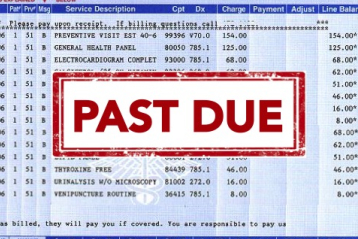Millions of working age adults are one diagnosis away from financial ruin.*
“Enrollment in high deductible plans without an HSA grew from 10.6% to 24.5% for adults aged 18–64.”
Jesse Slome, director of the American Association of Critical Illness Insurance
High deductible health plans numbers surge over past decade
The number of working Americans with high-deductible health insurance coverage has grown significantly over the past decade reports the American Association for Critical Illness Insurance.
“High-deductible health plans are hyped for their money-saving potential. They can greatly increase the risk of financial disaster for many,” states Jesse Slome, director of the organization. “People do what is suggested like choosing high deductible plans. Millions of working age adults are now one diagnosis away from financial ruin because they did what was suggested to them.”
According to the Kaiser Family Foundation 30 percent of covered workers were enrolled in a HDHP plan in 2019 . “From 2007 through 2017, enrollment in high deductible health plans has surged,” share AACII’s director. The organization gathers relevant information to help consumers plan for risks associated with critical illnesses.
The IRS defines a high deductible health plan as any plan with a deductible of at least $1,400 for an individual or $2,800 for a family. “The plan’s total yearly out-of-pocket expenses which includes the deductible, copayments, and coinsurance can not be more than $6,900 for an individual or $13,800 for a family,” Slome adds.
According to AACII, enrollment in high-deductible health plans coupled with a health savings account grew from 4.2% to 18.9% over the 10 years. Enrollment in high deductible plans without an HSA grew from 10.6% to 24.5% for adults aged 18–64 with employment-based coverage. “Over 60% of adults between ages 18 and 64 obtain their health insurance coverage through the workplace,” Slome explains. rk to undergo treatments and recover.”
What to do when you have a high deductible health plan
The Association works to educate Americans about the consequences associated with surviving critical illnesses such as cancer, heart attacks and strokes. “Because so many more people have high deductible plans, they will face costs just at the very time they are unable to pay,” Slome says. Over 500,000 Americans declare personal bankruptcy yearly. “Most are because of a health matter and most of them had health insurance when the condition first occurred.”
Calculate the savings of health insurance with both a high deductible and a lower deductible recommends Slome. Use a portion of the savings to get a small amount of critical illness insurance. Consider $10,000 or $15,000 of cash. That will cover costs when you reach and exceed your deductible.
The critical illness insurance advocate recommends another simple way to estimate how much coverage to consider. “Calculate the cost of rent or mortgage payments for between six and 18 months,” Slome recommends. “Those tend to be the biggest expenses we all face. It will enable you to cover those deductibles, out-of-pocket costs as well as rent or mortgage payments while you focus on recovery.”
Additional tips for critical illness insurance planning
Firstly men and women over 40 should learn more about what is critical illness insurance?
Secondly, use the Association’s instant critical illness insurance cost calculator. It provides an instant estimate of costs.
Thirdly, cancer is a significant risk especially at younger ages. If you are in your late 30s or 40s consider a cancer-only insurance policy. It will be more affordable and can be of significant value.


